Recently, the universe has been attempting to get my attention. On three separate occasions I listened to experts in different fields discuss how they handle problems. While most people avoid conflict, these people recommended running toward issues:
- Comedian Jerry Seinfeld was on the Tim Ferris Podcast. During the conversation he mentioned how he never lets an issue fester. Instead, when he feels tension he immediately confronts. “I don’t like discourse and I am fearless in rooting it out and solving it. And if anyone is having a problem I’m going to walk right up to them and go, ‘Is there a problem? Let’s talk about this.’ Because I cannot stand this type of turmoil.” (Here’s a link to the entire thought provoking interview: Seinfeld/Ferris).
- During a virtual professional development event, I heard Piers Thynee and Mark Mathieson of McClaren Group discuss the fast paced world of Formula 1 racing. Their team was charged with increasing ventilation production from 50 a week to 200 a day in response to the pandemic. Needless to say, inevitable obstacles appeared. They credited moving toward the problems, instead of hiding, as a key to their successful execution.
- Current New Jersey Nets General Manager, Sean Marks, spent several years with the highly respected San Antonio Spurs. He noticed head coach Gregg Popovich was eager to engage in difficult conversations. “Pop would never shy away from a challenging conversation. He actually relished them.”
What can leaders do?
It is much easier to spot problems than it is to find solutions. Elite leaders ask themselves: “How can I improve the situation?”
Most people hide from problems because they don’t want to disappoint someone they care about: parent, coach, boss, spouse, etc. The fear of letting others down is hard to handle.
What if we decided to create an environment that leaned into problems? What if we stated upfront: “there are going to be issues? Big issues. We expect and even welcome those challenges”
Would this approach empower others to move toward, instead of away, from issues?
It’s important to reflect on how we are reacting to bad news. When someone presents us with an issue, how do we respond? Huffing and puffing? Throwing our head on the desk? Or is it more subtle like bad body language, or a short cunning response?
Are we creating the psychological safety required for growth and improvement?
Man in the Mirror:
As the great artist Michael Jackson once said, “I’m starting with the man in the mirror.”
I’ve run from confrontation.
I’ve reacted poorly when others have brought inevitable issues my way.
I’ve avoided addressing credit card bills.
I’ve waited until tomorrow on tasks needed to be completed today.
I’m as guilty as anyone.
Here’s the thing….avoiding only makes problems worse.
As we charge into a new year I plan on running toward issues and not avoiding them. I plan on creating an environment of trust, where problems and failures are expected and dealt with immediately.
Within a short period of time I heard three powerful stories of successful people and organizations that embrace confrontation.
Do you need to be more proactive in addressing issues in your personal life?
Can you inspire action in others by being empathetic when they face adversity?
Happy New Year- Let’s run toward the challenges 2021 will present!
Mike
P.S. I was a guest on Joe Ferraro’s terrific 1% Better Podcast this week. Here are two links:
